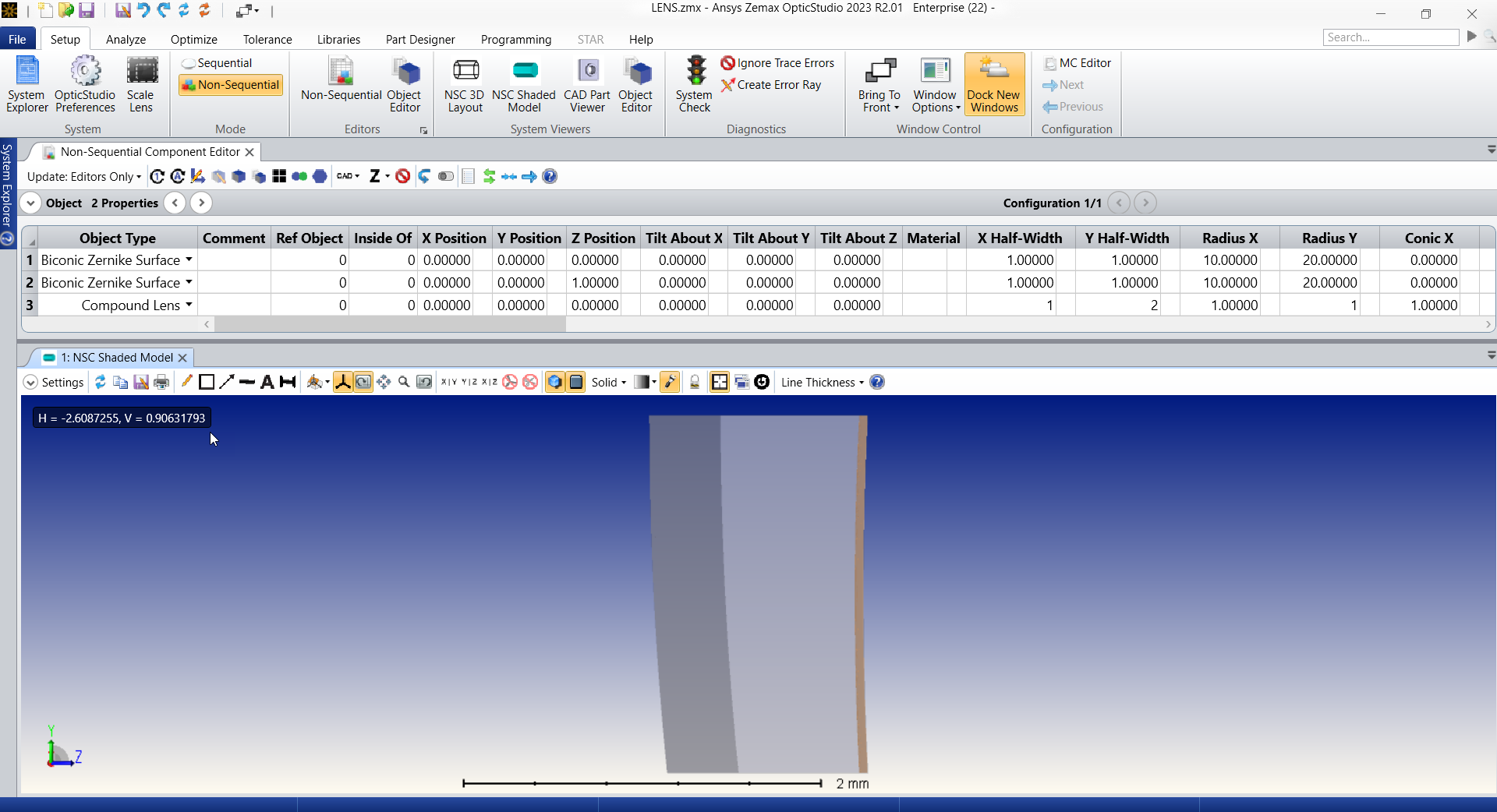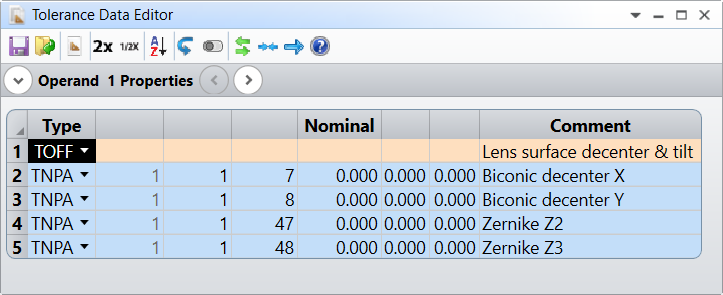For some use-cases it is more convenient to use pure non-sequential mode, for multi-pass systems for instance. Performing a tolerance analysis for surface tilts & decenters is not available with standard non-sequential tolerance operands:
- TNPS can be used of course for element tilt & decenter,
- TNPA can be used to tolerance the object parameter values, but surface tilt/decenter is not a parameter for most non-sequential geometries (standard lens, even asphere, for instance)
An option is then to use the compound lens object, together with Biconic Zernike Surfaces:

The Biconic Zernike Surfaces can be used to model a wide range of lens shapes, from standard to biconic, aspheres and Zernike Standard Sag Surface, as their sag is a combination of those sag definitions:

The other benefit of using this particular type of surface is that it also has tilts & decenters parameters:
- Zernike terms Z2/Z3 can be used for X/Y tilts, for each surface,
- Biconic Zernike Surfaces have built-in X/Y decenter parameters
They correspond to the following TNPA operand parameters:

As you can choose the number of Zernike terms that you can have for each Biconic Zernike Surface, you can also use the same approach to tolerance for Zernike surface irregularities.


